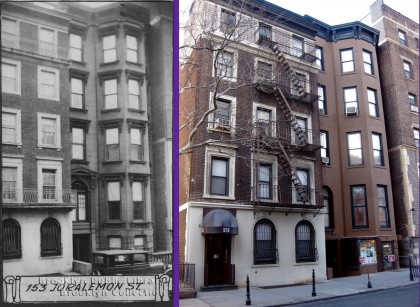 This vintage photo of the Brooklyn Heights residential building at 153 Joralemon Street from
This vintage photo of the Brooklyn Heights residential building at 153 Joralemon Street from 1953 1926 reveals that little has changed in 85+ years, save for the current bodega on the ground level. The five-story walk-up was built in 1900, according to Streeteasy, and currently comprises eight units. It also boasts a common roofdeck. 
(Photos: Vintage/Brooklyn Public Library; current/Chuck Taylor)
Heights History, 153 Joralemon, 1926
Connect with BHB
- stuart
- http://www.musictogetheratkiddiekorner.com Naomi Weinberger
- stuart
- bklyn20
- bklyn20
- Jorale-man
- stuart
- Justin
- Justin
- Justin
- Dan
- Jim
- bornhere
- Jorale-man
Nabe Chatter
- No concrete recylcling near ho on Open Thread Wednesday
- RickP on Open Thread Wednesday
- Jorale-man on Carjacking on Joralemon?
- Andrew Porter on Open Thread Wednesday
- Peter Scott-Thomas on Open Thread Wednesday
- Downtown Dad on Open Thread Wednesday
- Arch Stanton on Open Thread Wednesday
- Effective Presenter on Open Thread Wednesday
- Effective Presenter on Open Thread Wednesday
- Bagel Hole on Open Thread Wednesday
Latest Stories
Support BHB
Buy essential books about Brooklyn Heights here.
Buy all your favorite AMAZON products via the BHB Store. Click here to get started.
Buy all your favorite AMAZON products via the BHB Store. Click here to get started.
- Winter Art Benefit at the Cat Cafe November 24, 2024
- Winter Art Benefit at the Cat Cafe November 24, 2024
News Tips
If you have a Brooklyn Heights news tip let us know. Click here to send us an e-mail.


